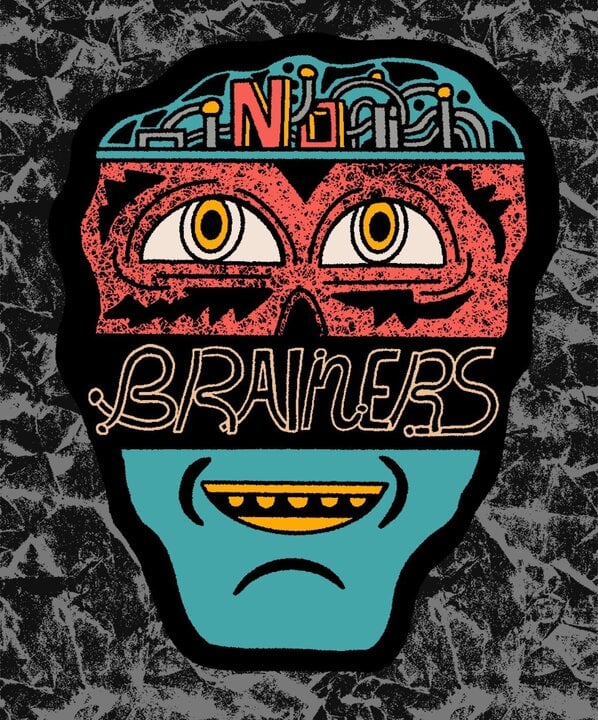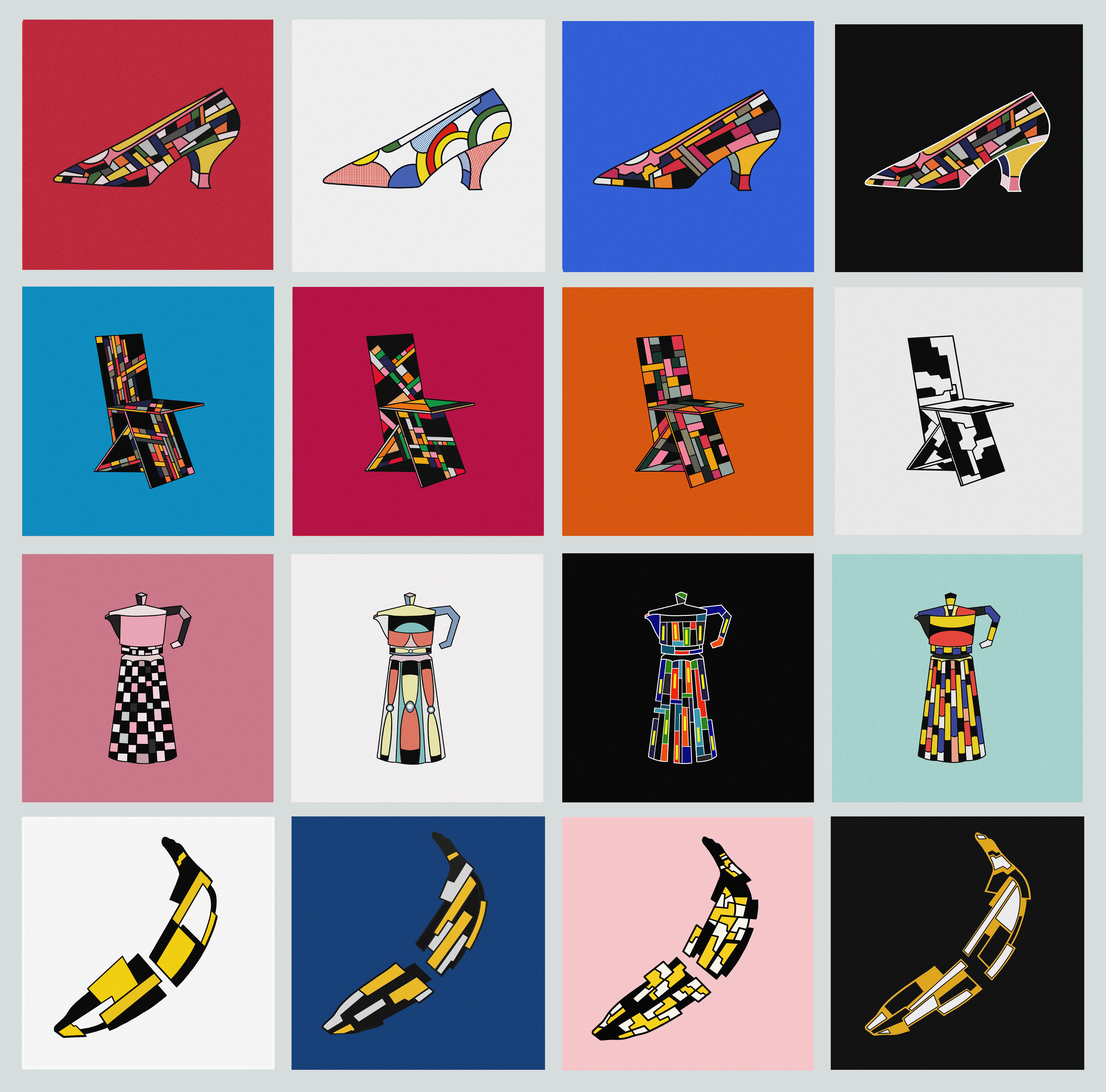Curated Release: Paper Buddha

About the Artist:
Paper Buddha is an American Buddhist artist. Hailing from the Bay Area of California, where he spent his formative years. He drew inspiration in his upbringing from the profound teachings of luminaries such as Alan Watts and Shunryu Suzuki, a Japanese priest recognized for his pioneering role in introducing Eastern philosophy, particularly Zen, to the forefront of Western awareness.
Raised in challenging circumstances, including stints in jails and foster homes, he found solace and guidance within Buddhist philosophy. These teachings became a vessel for watering his inner-sense of purpose and artistry, while literature, both “lowbrow” and transcendental, nourished his imagination: a love of pulp comics as well as books like 'Zen Mind, Beginner's Mind,' melded into the artistic expression that guides him today.
Transitioning into adulthood, Paper Buddha went on to pursue a corporate career, leveraging his formal education in business to ascend to executive roles, including serving on the board and as COO of International legal cannabis companies during the industry's nascent stages. It wasn't until the COVID-19 pandemic, when Paper Buddha shifted his career to reconnect with his true passions and embrace his creative calling, making the decision to pursue art full-time. Additionally, driven by a deep desire to preserve the rich heritage of Buddhist and pulp art, Paper Buddha saw NFTs as a revolutionary way to immortalize these cultural treasures on the blockchain, ensuring their accessibility and longevity for generations to come. In a perfect crescendo of timing, NFTs entered into his practice in 2020, and provided just the technology and platform to immortalize his work.
Today, Paper Buddha interweaves his varied experiences into works that are as visually stunning as they are reflective of his profound spiritual insights and mastery of technology. As an American Buddhist artist, he embodies a distinctive blend of cultural influences and spiritual practices. Raised in the diverse melting pot of American society, he acknowledges the multitude of backgrounds and experiences that forge the American Buddhist identity. Removing any notions of gatekeeping, Paper Buddha adopts an inclusive approach to Buddhism, inviting all seekers of its wisdom to divert of discrimination. His mission is unequivocal: to bring Buddhist art into the mainstream of Western culture while adhering to its fundamental values. He thoughtfully selects elements from the rich mosaic of American life that align with Western perspectives, creating a harmonious fusion of tradition and modernity.
For Paper Buddha, being a collage artist transcends mere aesthetics; it is an intentional reflection of what it means to practice Buddhism in America. Meditation, in his view, is not limited to the confines of monastic life but is a daily pursuit of self-enhancement and mindfulness. Embodying the principle of decentralization, he advocates for a varied and welcoming spiritual approach. As Paper Buddha puts it, "I'm just the artist, not the monk." Through his artwork, he encourages a dialogue on the confluence of culture, spirituality, and identity, charting a unique course that is emblematic of the American Buddhist journey.
“I'm just the artist, not the monk” - Paper Buddha
About the project - Paper Scrolls, 2024

This release will feature 42 artworks sold via the releases lazy mint on SuperRare.
If you judge a book by its cover, you will miss the beauty on the inside. The Paper Scrolls series explores the world inside of the American Pulp magazine. Often overlooked, the illustrations in the early pulp were the inspiration for many of the science fiction and fantasy stories you know and love today. This long format digital collage brings those images to life and offers collectors a new way to engage with storytelling in the Paper Buddha universe.
Paper Scrolls will be available on SuperRare Thursday, March 21st.
THE INTERVIEW
Paloma: Can you tell me a bit more about the title " Paper Scrolls" for this series?
Paper Buddha: The title Paper Scrolls encapsulates the essence of our series through multiple layers of meaning and symbolism. At its core, it's a playful play on words, blending the traditional medium of paper with the ancient connotations of scrolls, hinting at both whimsy and heritage. The term 'paper' pays homage to the pulp, reflecting not only the material used in our artwork but also suggesting a mix of entertainment and substance, akin to pulp fiction. Moreover, 'scrolls' evoke the idea of a collage, indicating a diverse collection of elements arranged in a visually compelling manner. The choice of 'side scrolling animation,' reminiscent of Mario Brothers, adds another dimension to our title, hinting at the dynamic and engaging visual style of our series. It promises an experience that is both nostalgic and innovative. Additionally, the mention of Buddhism's association with scrolls deepens the thematic significance of the title, suggesting exploration of spiritual and philosophical themes throughout the series.
Overall, 'Paper Scrolls' serves as a fitting moniker for our project, capturing its blend of tradition, innovation, and depth.
Paloma: How did you land on the number of pieces (42) ?
Paper Buddha: When determining the number of pieces for this project, the choice of 42 holds particular significance for me. Beyond its inherent numerical value, 42 carries a whimsical and nerdy charm, resonating with those familiar with its cultural references.
In "The Hitchhiker's Guide to the Galaxy," a beloved science fiction book, 42 is famously hailed as the ultimate answer to life, the universe, and everything. This playful nod to the literary world adds depth and intrigue to our artistic endeavor
Paloma: The American pulp magazines were published from 1896 to 1955, can you speak to what specifically about this magazine inspires you most?
Paper Buddha: The American pulp magazines of the pre-World War II era hold a unique charm that continues to inspire to this day. What captivates me most about these publications is their embodiment of retro-futurism, a fascinating blend of past imaginings of the future and the cultural context of their time.


In these magazines, we find a kaleidoscope of speculative fiction, adventure tales, and fantastical narratives that transport readers to worlds both familiar and fantastical. It's akin to stepping into a time machine that propels us forward into imagined futures from the lens of the past.
Moreover, the pulp magazines of this era which inspired my work most notably often featured characters and themes that resonated with a sense of mysticism and spiritual exploration reminiscent of the Buddhist literature that also influenced me. The characters from the stories remind me of Marvel superheroes, embodying virtues, facing moral dilemmas, and embarking on epic journeys that echoed the quest for enlightenment. This convergence of both the spiritual in buddhism introspection and pulp magazine futuristic speculation offers a rich tapestry of storytelling.
Paloma: Wayang Kuli, is an Indonesian form of shadow puppetry that you often reference as a point of inspiration within your work. Can you tell me a bit more about this?
Paper Buddha: Wayang Kulit, the Indonesian form of shadow puppetry, holds a profound influence on my creative process, serving as a guiding light in defining the essence of my work. When I embarked on crafting "Paper Buddha," I sought to establish distinct markers that would delineate my artistic identity, and the intricate interplay of shadow work emerged as a central motif.
 Wayang Kulit shadow puppetry
Wayang Kulit shadow puppetry
Moreover, the connection between shadow work and the psychedelic experience adds layers of depth to my creative exploration. Often through LSD psychedelics, it is the shadows that often manifest as elusive dancers, teasing the edges of perception and inviting introspection. By infusing my work with this psychedelic nature, I aim to guide viewers on a journey inward, prompting them to confront the shadows within themselves and traverse the realms of consciousness.
It is through this visual language I employ within my work, which I invite audiences to engage in a dialogue with their own shadows to embrace the inherent complexities of the human experience and embark on a quest for self-discovery. In essence, the incorporation of Wayang Kulit into my artistic repertoire not only infuses my work with cultural richness and psychedelic allure but also serves as a catalyst for introspection and self-reflection. It is through the dance of shadows that we uncover hidden truths and illuminate the path to inner enlightenment.
Paloma: When it comes to storytelling, what fundamental aspect or characteristic of your creative process do you consider the most vital? Specifically, how do you approach crafting narratives in a manner that you believe crucially defines the essence of what you aim to convey within your artwork?
 Paper Buddha, Torana. 2023
Paper Buddha, Torana. 2023
Paper Buddha: In my approach to storytelling, the fundamental aspect that I consider most vital is the ability to evoke a rich narrative experience within the confines of still imagery. I draw a lot of my inspiration and emphasis on visual storytelling from silent films. What I mean by this is, much like silent films, where every gesture, expression, and movement conveyed layers of meaning, I focus on infusing my 2D work with dynamic motion and action. Within each still image, I aim to encapsulate a moment that teems with narrative potential, inviting viewers to immerse themselves in a world where stories unfold with every glance.
“I want the viewer or the collector to fill in the blanks on their own” - Paper Buddha
I intentionally leave gaps in the narratives to be left to interpretation, rather than imposing a specific narrative on the viewer. In essence, I believe that the true essence of storytelling lies not in the words spoken or written, but in the silent dialogue between the artwork and the beholder.
Paloma: How do you ideally envision your work displayed or experienced?
Paper Buddha: With this project i was able to work on scroll in a huge format. This allowed me to delve into uncharted territories, utilizing touch designer to unleash the full potential of my creativity. This marriage within the intricate details and technical prowess culminates in an immersive experience that pushes the boundaries of my artistry. The larger the scale thee work can be experience the greater the ability for it to unveil new possibilities, affirming its indispensability in elevating the work to unprecedented heights.
My collage is not meant for the home it's meant to be on a 72 inch display or larger, its not meant to be small at all - Paper Buddha
 Paper Buddha, Atmosphere. 2022
Paper Buddha, Atmosphere. 2022
Paloma: what is the first step in your creative process?
Paper Buddha: The first step in my creative process is a unique journey that begins with a blend of introspection, exploration, and sensory immersion. Drawing from my background as a former DJ and my experiences with psychedelics, particularly acid, I approach creativity with a mindset of openness and receptivity.
I begin by delving into my archives of imagery, allowing my subconscious to guide the selection process. Much like selecting tracks for a mix, I sift through my visual repertoire, seeking out elements that resonate with me on a deep level. This process is akin to meditation, a practice I also incorporate into my creative routine, enabling me to tap into a state of heightened awareness and receptivity. Once I have selected this imagery for the work I direct my focus to color matching. Every image, color, and texture plays an integral part in my creative process, by which I ultimately incorporate to create the work in its totality as I strive to achieve harmony and balance within my compositions.
Paloma: Lazy mint function- what excited you?
Paper Buddha: I am always looking to try something new and different when it comes to my work. What truly intrigued me about this concept is its potential to transform the collecting experience into something more meaningful and perhaps interactive. Rather than a mere transactional exchange, the Lazy mint function for releasing this body of work allows for a deeper connection between myself as the artist and collector. I believe it creates an opportunity for collectors to actively participate in my journey, ensuring that acquiring my artwork doesn't feel like a passive "drive-by" experience but rather an immersive journey.
Additionally, the idea of rewarding collectors and stakers for their loyalty and commitment is something that resonated and stood out to me with this release- I am to foster a mutually beneficial relationship as this is a big driver for me.
Checkout the newest series release titled Paper Scrolls on March 21st, available exclusively on SuperRare.
Find more of Paper Buddha's work via his profile



